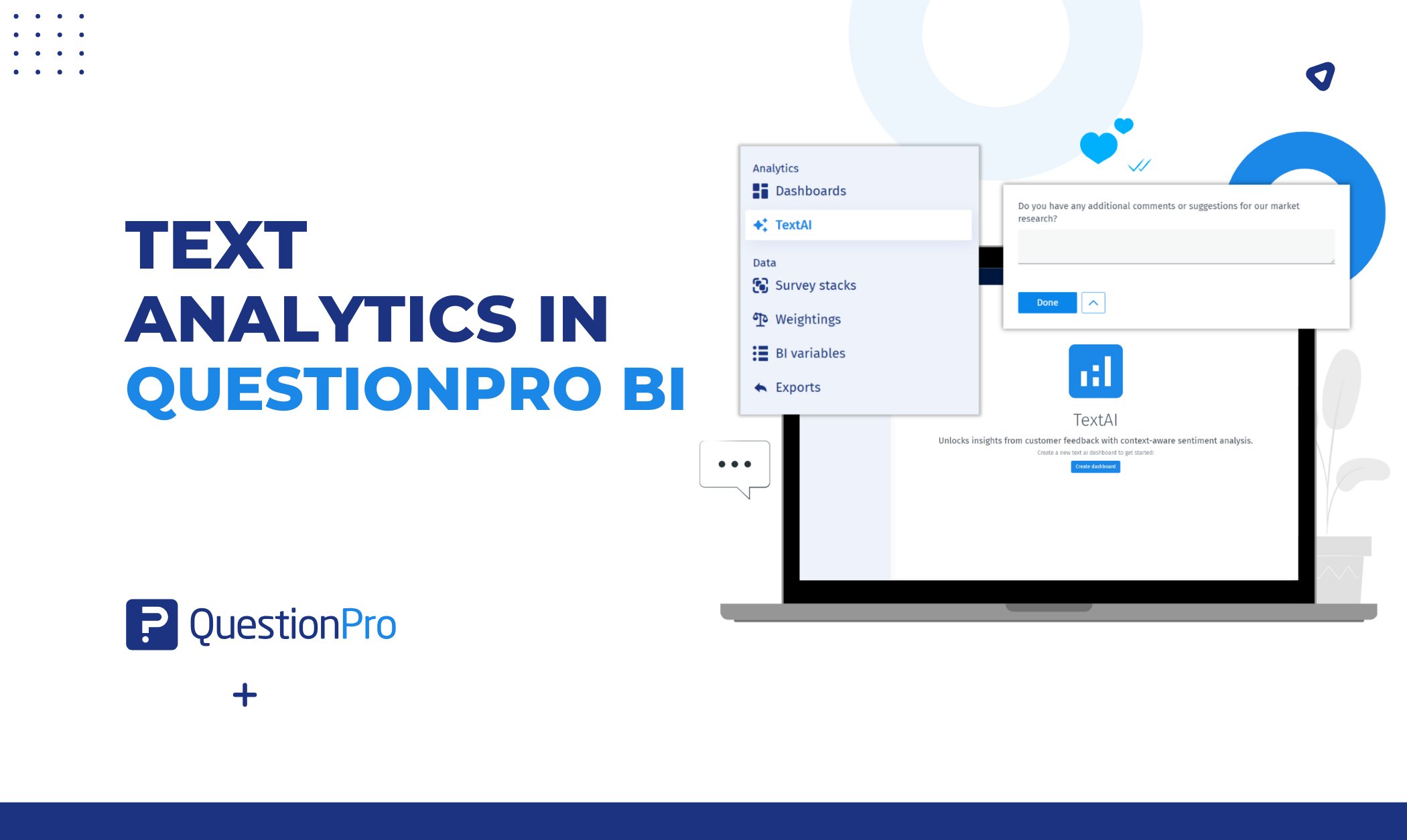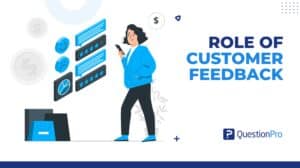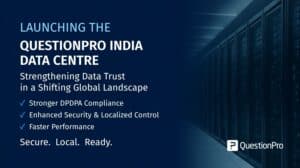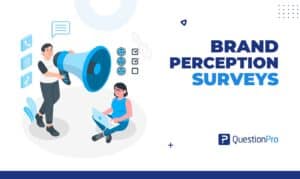
For researchers running advanced market research surveys, open-ended responses are often the most revealing part of the dataset. They capture context, nuance, and sentiment that closed-ended questions simply cannot. Yet, analyzing qualitative data at scale has always been a challenge. Sorting through thousands of free-text responses requires hours of coding, categorization, and interpretation, which often slows down decision-making.
The revamped text analytics feature in QuestionPro BI changes this. Built on QuestionPro AI, it combines artificial intelligence (AI), business intelligence (BI), and natural language processing (NLP) to give researchers a structured and scalable way to make sense of qualitative data. With Text Analytics 2.0, researchers can move from open-ended chaos to strategic clarity, all within an interactive dashboard.
What is text analytics in QuestionPro BI?
Text analytics in QuestionPro BI is a system that automatically processes large volumes of free-text survey responses, detects themes, categorizes comments, and visualizes insights in real time. Instead of manually coding responses, researchers can rely on QuestionPro AI’s proprietary engine to analyze responses and highlight what matters most.
Because it is built directly into QuestionPro BI, text analytics seamlessly connects with quantitative survey data, allowing for richer analysis and cross-sectional reporting. This means researchers can examine not only what respondents said, but also how those sentiments connect to key performance indicators (KPIs) such as customer satisfaction, loyalty, or purchase intent.
Why text analytics matters for researchers
In modern research, dashboards are no longer “nice to have” — they are essential. Executives and decision-makers need insights delivered quickly and visually. With the updated text analytics in QuestionPro BI, researchers can:
Save time by eliminating manual coding or external tools.
- Discover emerging themes and concerns faster.
- Deliver consumer-centric dashboards that combine quantitative and qualitative insights.
- Provide context behind KPIs, connecting the “what” with the “why.”
This upgrade enables the presentation of qualitative insights with the same rigor and scalability as quantitative findings.
Key features of text analytics 2.0 in QuestionPro BI
The new release of text analytics brings advanced capabilities to help researchers unlock the full value of qualitative data.
Smart topic detection
- Auto-detects topics, themes, and highlights without manual setup.
- Provides contextual topics and themes, making interpretation more accurate.
- Removes the need for messy codebooks, saving hours of work.
Easy discover process
- Be first to identify innovation, concerns, and actionable suggestions within your data.
- Be fast in capturing and tracking emerging themes and sentiment.
- Keep insights consumer-centric, focusing on what matters most to your audience.
Text mining on the go
- Apply natural language mining across thousands of text responses.
- Explore cross sections between themes, sentiments, and KPIs.
- Connect qualitative insights with quantitative measures directly in your BI dashboard.
These features ensure that insights are not only generated but also ready to be shared with stakeholders in a format that is accessible and impactful.

AI + BI + natural language processing: A powerful combination
What makes text analytics in QuestionPro BI unique is how it integrates AI, BI, and NLP into one ecosystem:
- Artificial intelligence (AI): Powers automatic detection, categorization, and pattern recognition across open-ended responses with QuestionPro AI.
- Business intelligence (BI): Transforms processed text data into dynamic dashboards, visualizations, and executive-ready reports.
- Natural language processing (NLP): Ensures accurate interpretation of human language, accounting for tone, context, and sentiment.
Together, these three elements mean that researchers no longer need to choose between qualitative depth and quantitative scalability. With QuestionPro BI, they get both.
Practical applications for market researchers
Text analytics in QuestionPro BI is designed for advanced research projects where open-ended data plays a central role. Examples include:
- Customer experience research: Analyze customer comments at scale to uncover pain points, loyalty drivers, and areas of improvement.
- Product research: Detect new feature requests, identify usability challenges, and capture spontaneous feedback from users.
- Employee experience research: Surface concerns, opportunities, and culture-related themes in workforce surveys.
- Brand tracking: Monitor consumer sentiment and themes across time periods and market segments. You can download this in-depth guide on managing brand trackers to learn how to utilize it to positively impact your brand.
Because QuestionPro BI dashboards integrate both text and numeric data, researchers can show how qualitative themes correlate with measurable KPIs. For instance, a sudden drop in NPS can be paired with sentiment analysis of comments to reveal the root causes.
Benefits of text analytics for research teams and organizations
Adopting text analytics in QuestionPro BI has both short-term and long-term benefits:
- Efficiency: Reduce manual labor and accelerate the analysis process.
- Clarity: Move from scattered responses to structured, visual insights.
- Scalability: Handle large volumes of data without additional resources.
- Strategic alignment: Deliver insights that are directly tied to organizational KPIs.
Ultimately, the feature empowers research teams to provide not just data, but a clear narrative that stakeholders can act upon.
Why QuestionPro BI is built for modern research
Unlike third-party tools, QuestionPro BI is fully developed in-house, ensuring seamless integration with the survey platform. This means researchers can manage the entire process — from survey design to advanced reporting — without exporting data into external systems.
With the addition of advanced text analytics, QuestionPro BI becomes a complete solution for researchers who need to handle complex, mixed-method data. It provides the ability to:
- Combine open-ended insights with quantitative survey data.
- Visualize findings in real-time dashboards.
- Share interactive reports with decision-makers.
By leveraging QuestionPro AI, the platform ensures that insights are not only generated quickly, but also with precision and contextual depth.
Conclusion
Text analytics in QuestionPro BI gives researchers the tools to transform raw, unstructured responses into strategic, actionable insights. Powered by AI, BI, and natural language processing, it allows qualitative data to be analyzed with the same rigor and speed as quantitative metrics.
For organizations, this means that open-ended feedback is no longer a burden — it is a strategic asset. By embracing text analytics in QuestionPro BI, research teams can bridge the gap between numbers and narratives, delivering dashboards that inspire smarter decisions.







